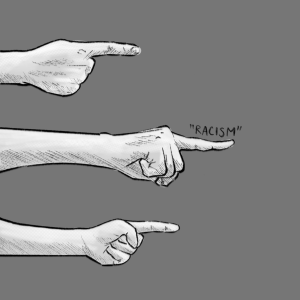The French Dispatch: Wes Anderson’s Quirkified Journalism is Worth the Watch
November 30, 2021
Rating: 4.5/5 Falcons
Wes Anderson’s name is well-known in the world of film, capable of ensuring ticket sales in and of itself. This allows The French Dispatch, Anderson’s newest film, to be even more experimental than usual. Rather than following the traditional plot arc of rising action, climax, and resolution, the movie is designed to resemble an edition of a news journal. The movie’s narrative frame is the journal itself: an American publication called The French Dispatch outposted in a fictional French city named Ennui. At the beginning of the film the audience learns that the Editor-in-Chief and progenitor of this paper, Arthur Howitzer Jr. (Bill Murray), has died, and in his will declared that the paper be discontinued following his death. As such, the edition of The Dispatch that was in the works prior to his sudden demise becomes its final edition.
The film is in large part an anthology of four stories each corresponding to a section of the paper: the first section is local color, an article dubbed “The Cycling Reporter.” This segment, a brief overview of the town of Ennui itself, is the shortest. The second section is the arts, or “The Concrete Masterpiece.” Third comes politics, in an article titled “Revisions to a Manifesto,” followed by food, or “The Private Dining Room of the Police Commissioner.”
Some watchers may take offense at the fact that these stories lacked a central theme to tie them together, but I interpreted this as an intentional choice. Perhaps my opinion is biased—I’ve always enjoyed the matryoshka style of encompassing stories within stories—but the film’s organization in fact contributed to its success. In terms of narrative direction, you had no idea where the story would turn next, forcing your engagement through the whole viewing experience.
Although the film seems to lack a thematic frame holding it together, it is supported by a narrative one. Following each segment of the film is a brief snippet of Howitzer discussing the article with its writer. These scenes serve to center the audience in the movie’s frame: the production of the journal. They are vital not only for the movie’s organization but also its pathos; they provide insight into the relationships between Howitzer and his authors. Although the audience knows of Howitzer’s death from the beginning, that same emotional blow redelivered at the end lands harder after his close relationships to other characters have been developed.
Each of the individual sections is an engaging story in its own right, and Anderson’s signature symmetrical, idiosyncratic charm shines through in each one. The writers on the paper: Sazerac (Owen Wilson), Berensen (Tilda Swinton), Krementz (Frances McDormand), and Wright (Jeffery Wright), are characterized by the presentations of their story in a demonstration of how visual choices can represent different writing styles and authorial personalities. For example, the choice to present much of Krementz’s “Revisions to A Manifesto” in black and white, while Sazerac’s “The Cycling Reporter” is in color.
The French Dispatch manages to include multiple storylines, creative visual techniques, and compelling character development all within an unconventional narrative structure. Although Anderson’s quintessential quirkiness may put off some viewers, I truly believe it is a uniquely presented story—or, rather, amalgamation of stories—well worth its 108 minute runtime.











